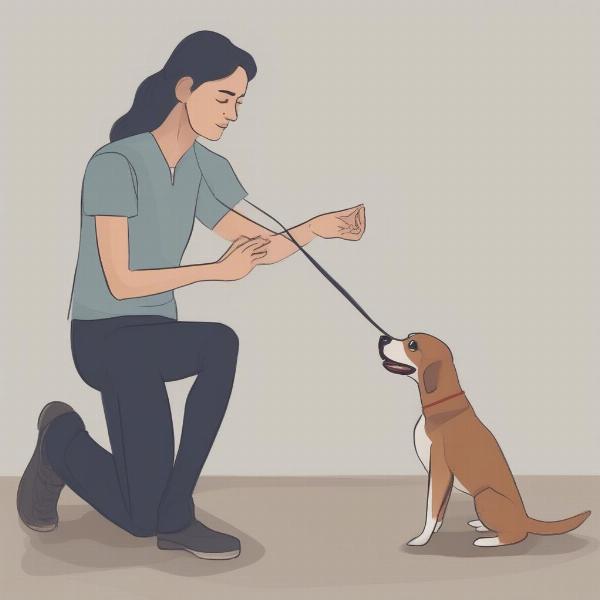Shock collars, also known as e-collars or training collars, are a controversial topic, especially when it comes to small dogs. While they can be effective tools for training, their use requires careful consideration, responsible handling, and a thorough understanding of your dog’s temperament. This article will explore the pros and cons of using shock collars for small dogs, offering guidance on how to choose the right collar, how to use it safely and effectively, and exploring alternative training methods.
Understanding Shock Collars and Their Impact on Small Breeds
It’s crucial to understand that shock collars for small dogs are not a one-size-fits-all solution. The impact of the shock can vary greatly depending on the dog’s size, weight, and pain tolerance. A shock that is barely noticeable to a larger dog can be quite uncomfortable for a smaller breed. This is why choosing a collar specifically designed for small dogs with adjustable intensity levels is paramount. These collars offer more precise control over the stimulation, allowing you to find the lowest effective setting for your dog.
Choosing the Right Shock Collar for Your Small Dog
When selecting a shock collar for your small dog, prioritize collars with multiple stimulation modes, including vibration and tone, in addition to static correction. This allows you to start with less intense options and only use the static correction if absolutely necessary. Look for collars with adjustable intensity levels, ensuring you can tailor the stimulation to your dog’s individual needs. Features like waterproof design and long battery life are also important considerations. Never use a collar designed for larger dogs on a small breed.
Training Techniques: Using a Shock Collar Responsibly
 Owner using a shock collar to train their small dog safely
Owner using a shock collar to train their small dog safely
Shock collars should only be used as a last resort after trying positive reinforcement methods. They should never be used to punish a dog. Instead, they can be effective tools for addressing specific behavioral issues, such as excessive barking or recall training. Always start with the lowest intensity setting and gradually increase it only if needed. Pair the stimulation with a verbal command, so your dog learns to associate the command with the desired behavior. Consistency and patience are key to successful training.
Alternatives to Shock Collars for Small Dogs
Consider exploring alternative training methods before resorting to shock collars. Positive reinforcement techniques, such as rewarding desired behaviors with treats, praise, and toys, are often highly effective and build a stronger bond between you and your dog. Clicker training is another popular method that helps dogs learn quickly and effectively. Consulting with a certified dog trainer can provide personalized guidance tailored to your dog’s specific needs.
Conclusion: A Balanced Approach to Shock Collar Use
Shock collars can be useful training tools for small dogs when used responsibly and ethically. However, it’s crucial to prioritize your dog’s well-being and explore alternative training methods first. If you do choose to use a shock collar, ensure you choose a collar specifically designed for small breeds, use it with proper training techniques, and always prioritize positive reinforcement.
FAQ:
- Are shock collars cruel for small dogs? When used incorrectly, shock collars can be harmful. Responsible use with the lowest effective setting is key.
- What size shock collar should I get for my small dog? Choose a collar specifically designed for small breeds, with adjustable intensity levels.
- Can shock collars be used on puppies? Consult a veterinarian before using a shock collar on a puppy.
- What are some alternatives to shock collars? Positive reinforcement, clicker training, and professional dog training are effective alternatives.
- How do I know if a shock collar is too strong for my small dog? Start with the lowest setting and observe your dog’s reaction. If they yelp or show signs of distress, the setting is too high.
- Can I leave a shock collar on my small dog all the time? No, shock collars should only be used during training sessions.
- How can I find a certified dog trainer? Search online or ask your veterinarian for recommendations.
ILM Dog is a leading international website dedicated to providing expert advice on dog care and wellbeing. We offer valuable resources on various topics, including dog breeds, health, training, nutrition, grooming, and products. For expert advice on choosing the right products for your small dog, including training collars, contact us at [email protected] or +44 20-3965-8624. ILM Dog is committed to helping you provide the best possible care for your furry companion.